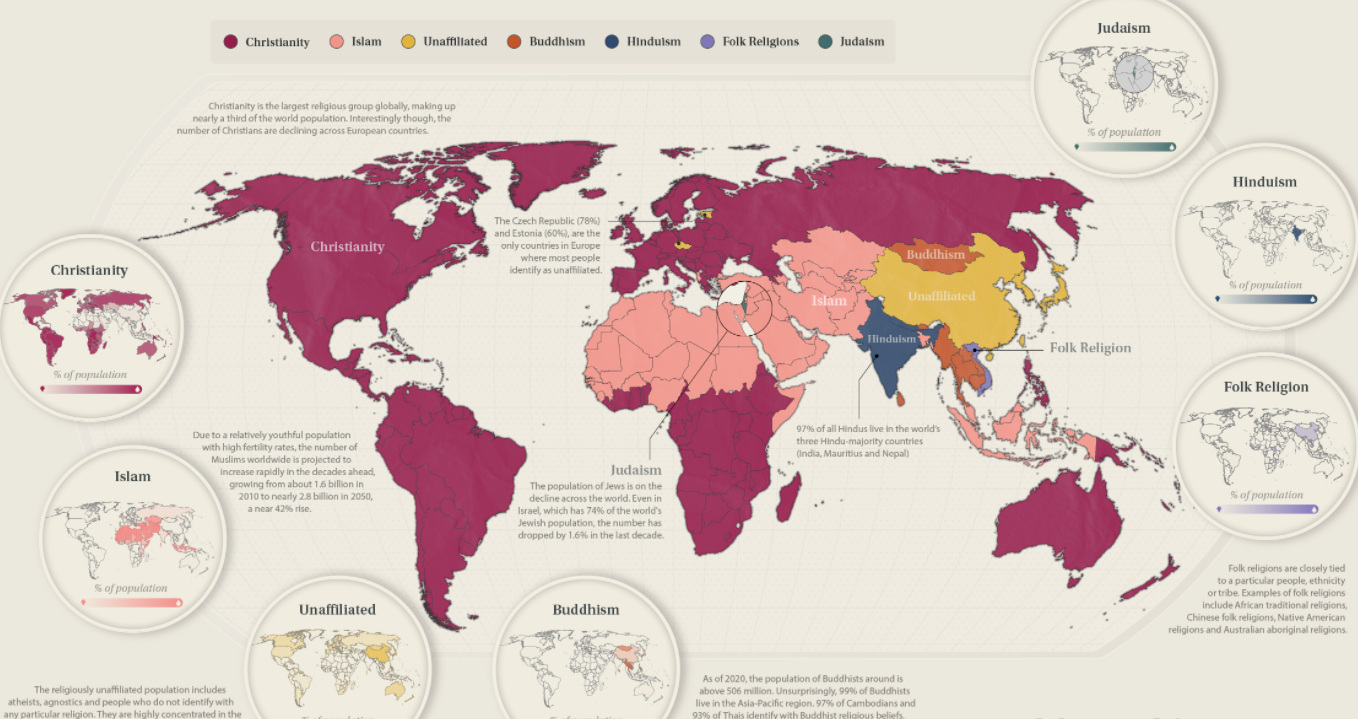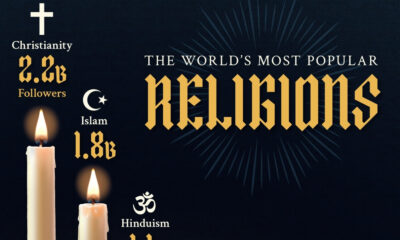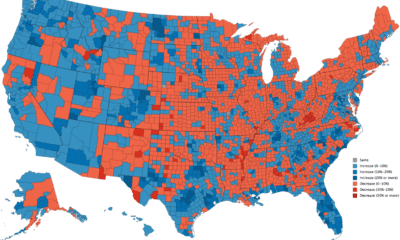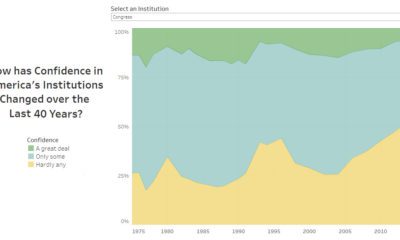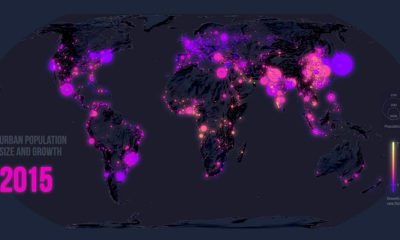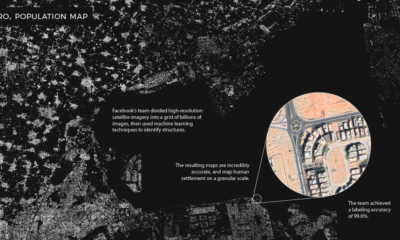Misc
Mapped: The World’s Major Religions
View the full-size infographic map
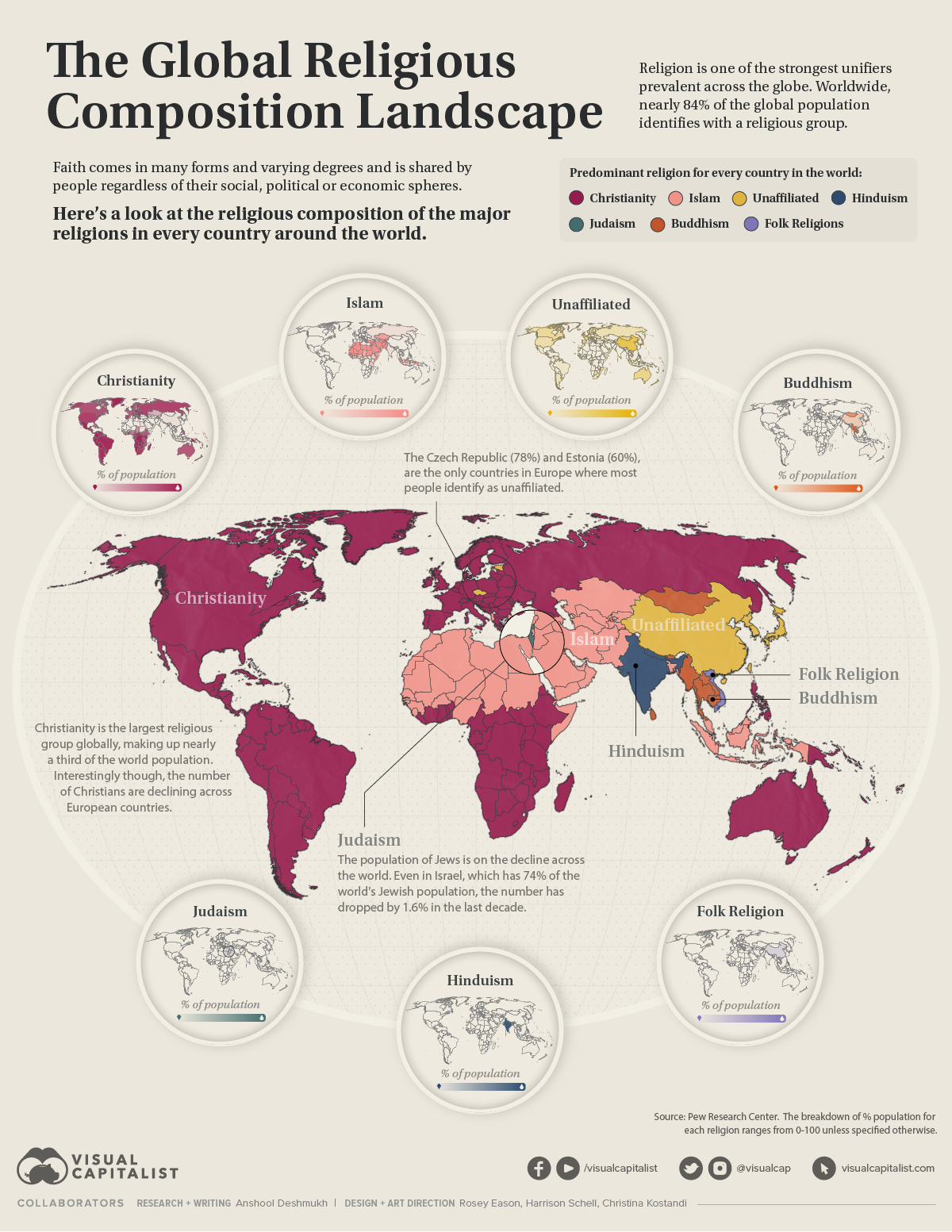
View the high-resolution version
Religious Composition of Countries
The world has become increasingly more secular in the last few decades. However, religion remains an integral part of many people’s lives, and 84% of the world’s population identifies with a religious group.
The religious profile of the world is rapidly changing, driven primarily by differences in fertility rates and the size of youth populations among the world’s major religions, as well as by people switching faiths.
With the help of data from Pew Research Center, we break down the religious composition of the major religions in countries worldwide.
Religious Makeup of the World by Major Religions
Determining the exact number of religions across the world is a daunting task. Many religions can be difficult to categorize or to tell apart for those not intimately familiar with their doctrine.
Pew Research Center organizes the world’s religions into seven major categories, which includes five major religions (Christianity, Islam, Buddhism, Hinduism, and Judaism), one category that broadly includes all Folk/Traditional religions, and an unaffiliated category.
Globally, Christianity has the largest following of these categories. Around 31% of the world’s population are Christians, closely followed by Muslims at 25%. Jews have the smallest population of major religions, with only 0.2% of the world identifying as Jewish.
Let’s take a look at the religious composition of the world when accounting for regions:
| Region | Christians | Muslims | Unaffiliated | Hindus | Jews | Buddhists | Folk |
|---|---|---|---|---|---|---|---|
| North America | 74.6% | 1.3% | 19.2% | 0.8% | 1.6% | 1.2% | 0.4% |
| Latin America-Caribbean | 89.7% | 0.1% | 8.0% | 0.1% | 0.1% | 0.1% | 1.8% |
| Europe | 72.2% | 6.8% | 20.0% | 0.2% | 0.2% | 0.2% | 0.1% |
| Middle East-North Africa | 3.6% | 93.1% | 0.6% | 0.6% | 1.6% | 0.2% | 0.3% |
| Sub-Saharan Africa | 62.0% | 31.4% | 3.0% | 0.2% | 0.1% | 0.1% | 3.2% |
| Asia-Pacific | 7.2% | 25.7% | 20.0% | 26.0% | 0.1% | 11.3% | 8.6% |
| World | 31.0% | 25.0% | 15.6% | 15.2% | 0.2% | 6.6% | 5.6% |
From Islam being the dominant religion in the Middle East to over 95% of Cambodians and Thais following Buddhism, here’s how prevalent every major religion in the world is.
Christianity
The world’s largest religion, Christianity, is practiced by about 2.4 billion people.
The country with the highest number of practicing Christians is the United States, with a Christian population of 253 million. Brazil and Mexico follow closely with 185 million and 118 million Christians, respectively.
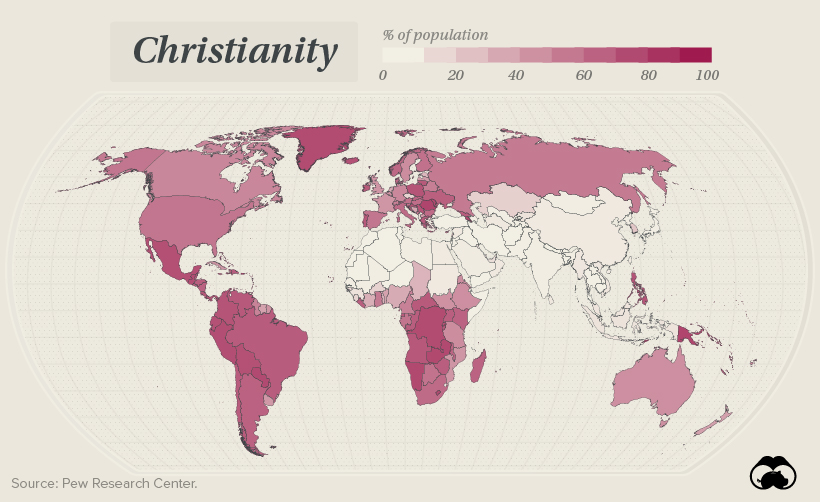
Christianity has historically spread around the globe and today it remains a geographically widespread religion. Over the past century, it has become less concentrated in Europe while becoming more evenly distributed throughout the Americas, sub-Saharan Africa, and the Asia-Pacific region.
Islam
Even though it’s the predominant religion of countries in the Middle East and Northern Africa, by sheer number, countries in Asia have the highest percentage of practicing Muslims in the world.
It may surprise you to know that 14.2% of Indians are Muslim. As a result, the country is home to one of the world’s largest Muslim populations, surpassed only by Indonesia.
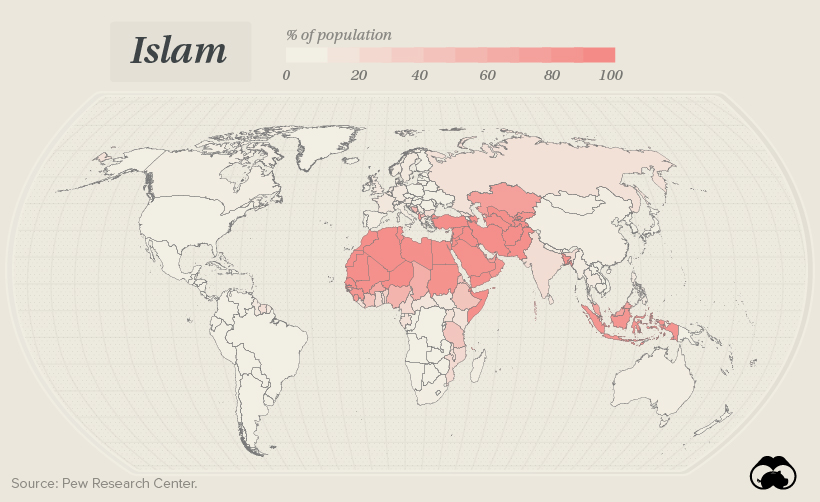
Islam is also the world’s fastest-growing major religion. The number of Muslims is expected to increase by 70%, from 1.8 billion in 2015 to nearly 3 billion in 2060. The fact that they have the youngest median age, at 24, also helps this population growth.
Judaism
While Jews historically have been found all around the globe, Judaism is highly geographically concentrated today. More than four-fifths of all Jews live in just two countries: the United States and Israel. Israel is the only country with a Jewish majority, with 76% of the population being practicing Jews.
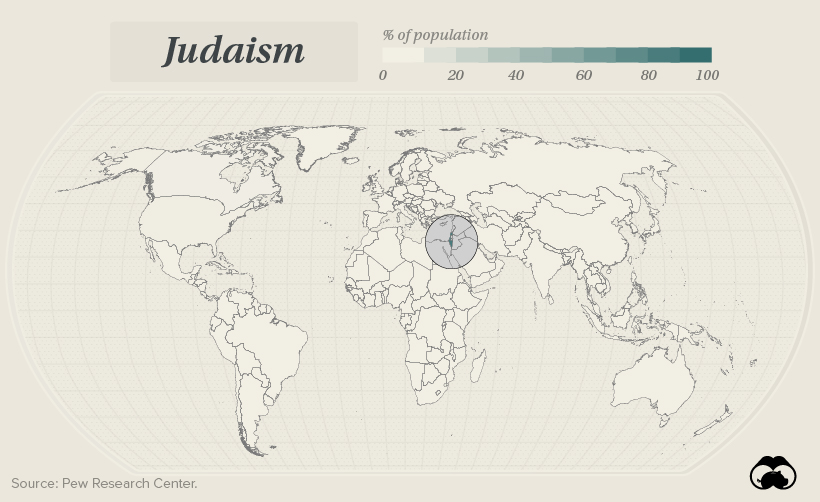
The largest remaining shares of the global Jewish population apart from the U.S. and Israel are in Canada (about 3% of the country’s population), France (2%), the United Kingdom (2%), Germany (2%), Russia (2%) and Argentina (between 1% and 2%).
Unaffiliated
The religiously unaffiliated population includes atheists, agnostics, and people who do not identify with any particular religion. 720 million of the Chinese population consider themselves religiously unaffiliated, while 78% of Czechs feel the same way.
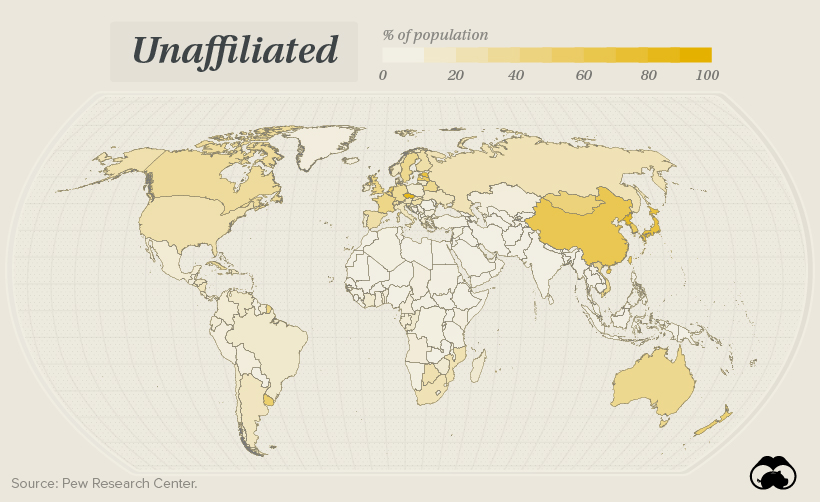
However, it is worth noting that many of the religiously unaffiliated hold some religious or spiritual beliefs. For example, surveys have found that faith in God or a higher power is shared by 7% of unaffiliated Chinese adults, 30% of unaffiliated French adults, and 68% of unaffiliated U.S. adults.
Hinduism
Hinduism is the third-largest religion worldwide, with approximately 1.2 billion Hindus in many countries. Interestingly, however, Hinduism is the dominant religion in only three countries, India with 79%, Nepal with 80%, and Mauritius with 48%.
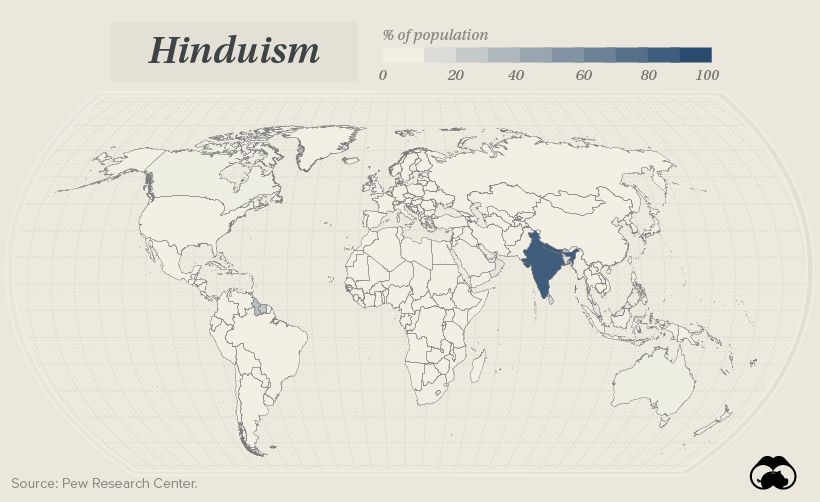
Although Hinduism is rarely a country’s primary religion, it still enjoys a global presence. Many regions around the world support significant populations of Hindus, including the Caribbean, Southeast Asia, North America, and South America.
Buddhism
According to estimates, half the world’s Buddhists live in China. Still, they make up only 18% of the country’s population. Most of the rest of the world’s Buddhists live in East and South Asia, including 13% in Thailand (where 93% of the population is Buddhist).
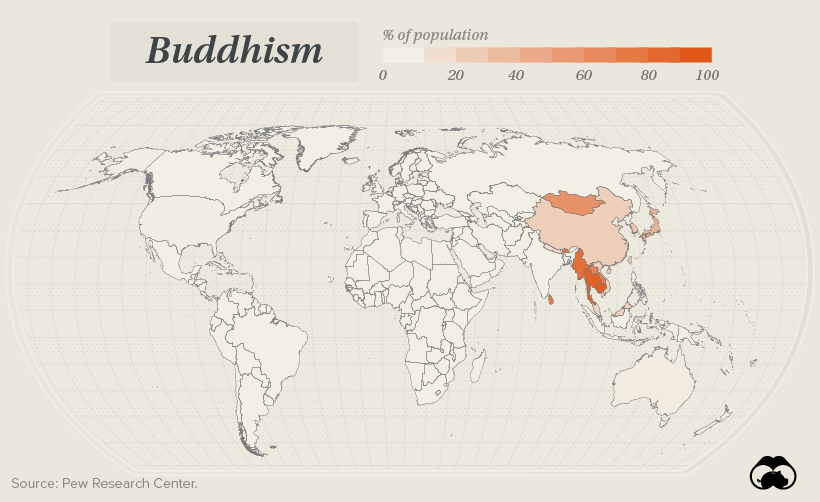
Buddhism in Asia is a matter of both identity and practice. Scholars and journalists have documented that many Asian countries may engage in Buddhist practices without considering themselves part of any organized religion.
Folk Religion
Folk religion is any ethnic or cultural religious practice that falls outside the doctrine of organized religion. Grounded on popular beliefs and sometimes called popular or vernacular religion, the term refers to how people experience and practice religion in their daily lives.
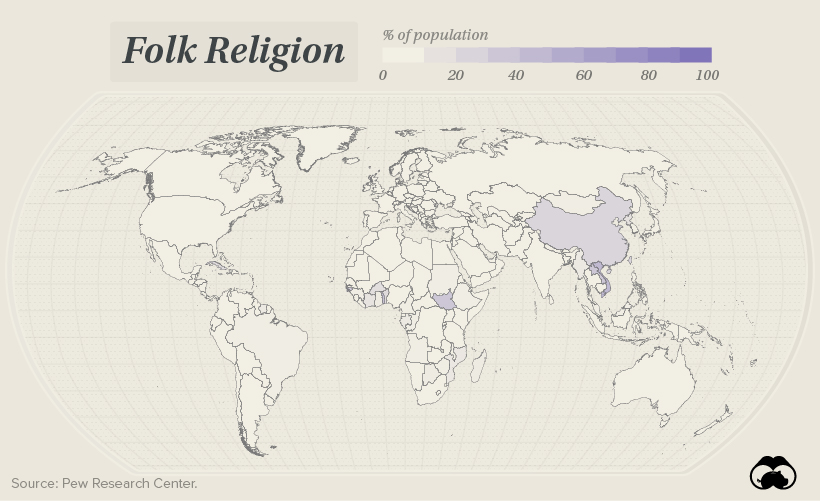
As of 2020, an estimated 429 million people, about 6% of the world’s total population, were adherents of folk or traditional religions. Some notable folk religions include African traditional religions, Chinese folk religions, Native American religions, and Australian aboriginal religions.
VC+
VC+: Get Our Key Takeaways From the IMF’s World Economic Outlook
A sneak preview of the exclusive VC+ Special Dispatch—your shortcut to understanding IMF’s World Economic Outlook report.

Have you read IMF’s latest World Economic Outlook yet? At a daunting 202 pages, we don’t blame you if it’s still on your to-do list.
But don’t worry, you don’t need to read the whole April release, because we’ve already done the hard work for you.
To save you time and effort, the Visual Capitalist team has compiled a visual analysis of everything you need to know from the report—and our upcoming VC+ Special Dispatch will be available exclusively to VC+ members on Thursday, April 25th.
If you’re not already subscribed to VC+, make sure you sign up now to receive the full analysis of the IMF report, and more (we release similar deep dives every week).
For now, here’s what VC+ members can expect to receive.
Your Shortcut to Understanding IMF’s World Economic Outlook
With long and short-term growth prospects declining for many countries around the world, this Special Dispatch offers a visual analysis of the key figures and takeaways from the IMF’s report including:
- The global decline in economic growth forecasts
- Real GDP growth and inflation forecasts for major nations in 2024
- When interest rate cuts will happen and interest rate forecasts
- How debt-to-GDP ratios have changed since 2000
- And much more!
Get the Full Breakdown in the Next VC+ Special Dispatch
VC+ members will receive the full Special Dispatch on Thursday, April 25th.
Make sure you join VC+ now to receive exclusive charts and the full analysis of key takeaways from IMF’s World Economic Outlook.
Don’t miss out. Become a VC+ member today.
What You Get When You Become a VC+ Member
VC+ is Visual Capitalist’s premium subscription. As a member, you’ll get the following:
- Special Dispatches: Deep dive visual briefings on crucial reports and global trends
- Markets This Month: A snappy summary of the state of the markets and what to look out for
- The Trendline: Weekly curation of the best visualizations from across the globe
- Global Forecast Series: Our flagship annual report that covers everything you need to know related to the economy, markets, geopolitics, and the latest tech trends
- VC+ Archive: Hundreds of previously released VC+ briefings and reports that you’ve been missing out on, all in one dedicated hub
You can get all of the above, and more, by joining VC+ today.
-

 Markets1 week ago
Markets1 week agoU.S. Debt Interest Payments Reach $1 Trillion
-

 Business2 weeks ago
Business2 weeks agoCharted: Big Four Market Share by S&P 500 Audits
-

 Real Estate2 weeks ago
Real Estate2 weeks agoRanked: The Most Valuable Housing Markets in America
-

 Money2 weeks ago
Money2 weeks agoWhich States Have the Highest Minimum Wage in America?
-

 AI2 weeks ago
AI2 weeks agoRanked: Semiconductor Companies by Industry Revenue Share
-

 Markets2 weeks ago
Markets2 weeks agoRanked: The World’s Top Flight Routes, by Revenue
-

 Demographics2 weeks ago
Demographics2 weeks agoPopulation Projections: The World’s 6 Largest Countries in 2075
-

 Markets2 weeks ago
Markets2 weeks agoThe Top 10 States by Real GDP Growth in 2023




